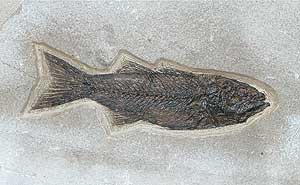Glossary
The Formation of Fossils
Fossils are the record of life preserved in monuments of stone. Almost all living organisms can leave fossils, but usually only the hard parts of plants and animals fossilize. Soft internal organs, muscle, and skin rapidly decay and are rarely preserved, but the bones and shells of animals are good candidates for fossilization. Almost no fossil record exists for soft organisms such as jellyfish and worms.
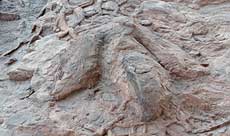 |
| Dinosaur Track. [ more ] |
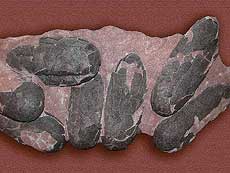 |
| Raptor Dinosaur Egg Fossils. [ more ] |
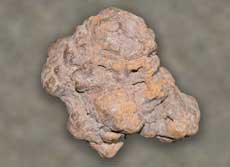 |
| Copralite - Dinosaur Dung. [ more ] |
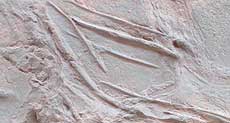 |
| Dinosaur swimming tracks. [ more ] |
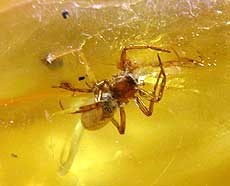 |
| A spider entombed in amber. [ more ] |
Fossils can form in unusual ways. Small bugs or insects can become trapped in tree sap. Eventually the sap hardens and forms the semiprecious material called amber. In some pieces of amber the entombed remains of organisms can be found. Volcanic eruptions can form fossils when animals get trapped in the hot ash flows. In this case, the fossil is a hole in the shape of the animal.
By far the most common fossil remains are those of shelled invertebrate sea loving creatures such as snails, corrals, and clams. These make up most of the fossil record. Plants can leave fossils. In fact coal is the fossil record of whole forests; however, individual plant structures usually do not survive as the plant materials are compressed to less than one hundredth of their original size.
Fossils of land animals are scarcer than those of plants. In order to become fossilized, animals must die in a watery environment and become buried in the mud and silt. Because of this requirement most land creatures never get the chance to become fossilized unless they die next to a lake or stream. Indeed there may be whole species of land animals in which no fossil record has been discovered. We may never know how many and diverse these animals were.
